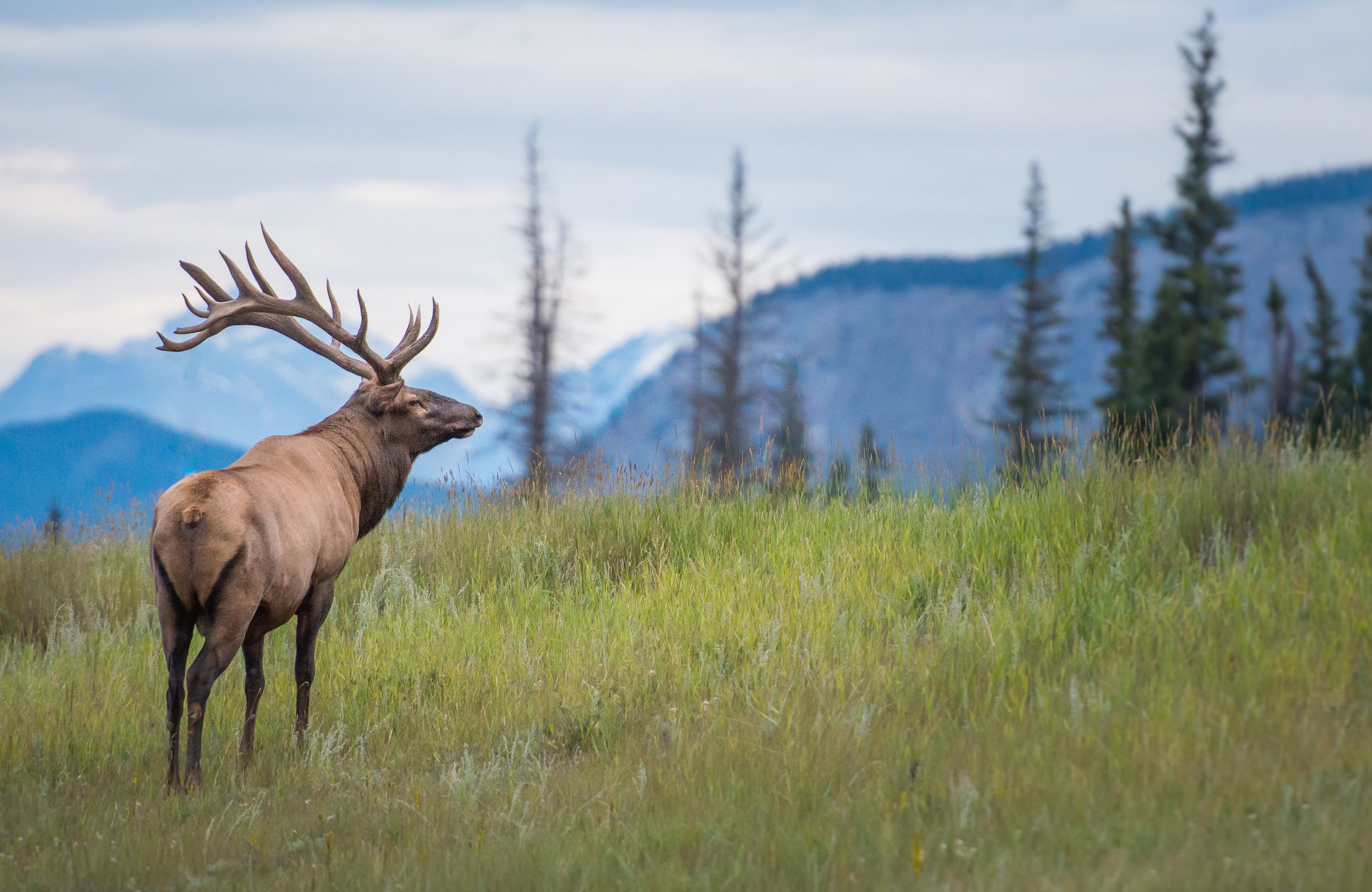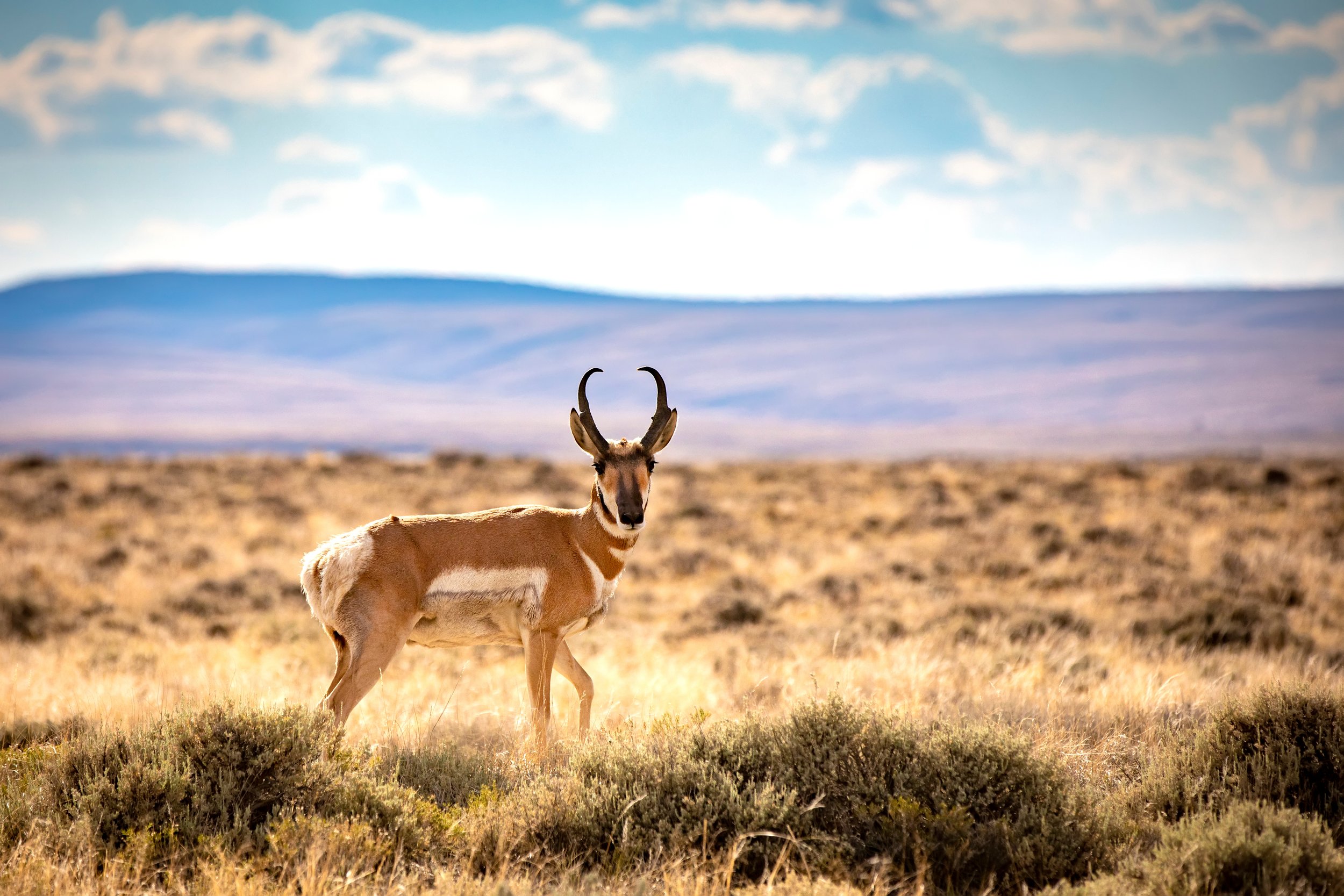The Bureau of Land Management Directs State Offices to “Explicitly Consider Habitat Connectivity” in Land Management Planning
WASHINGTON, D.C. (November 16, 2022) — The Bureau of Land Management (the BLM) announced one of the more inclusive and forward-thinking federal land management policies dedicated to restoring habitat connectivity in almost a decade.*
Because the BLM manages roughly 245 million surface acres of land that are home to more than 330 threatened and endangered species and 2,430 sensitive species, this new BLM policy has the potential to bolster biodiversity on our public lands and drastically improve the health of a wide range of struggling species.
The policy was released in an instruction memorandum titled “Habitat Connectivity on Public Lands.” It defines “habitat connectivity” as the degree to which and how “distinct sources of food, water, and shelter for fish, wildlife, and plant populations are distributed and inter-connected, both spatially and temporally, across terrestrial and aquatic ecosystems.” The Instruction Memorandum directs the BLM to:
Complete an initial assessment of priority habitats and the connectivity between them within a year, so the BLM can develop a consistent framework and tool for its staff to use during land use planning;
Consult with Tribes and States regarding which priority species and habitats to prioritize for this initial assessment and where and how to focus needed management practices;
Evaluate whether existing land use plans restore, maintain, improve, or conserve areas of habitat connectivity (referred to as AHCs) during scheduled land use plan evaluations; and
Analyze and disclose all relevant AHCs, consider alternatives to avoid, minimize, and mitigate adverse impacts to AHCs, identify management practices for each proposed plan alternative, incorporate monitoring requirements and adaptative management strategies, and identify any restoration needs into a land use plan’s NEPA (National Environmental Policy Act) analysis.
The BLM has already taken steps to protect wildlife corridors through a new statewide Resource Management Plan amendment in Colorado to promote the conservation of big game corridors.
Traditional ecological knowledge and local, regional, and national data, including climate modeling data, will inform the initial inventory assessment. In addition to states and Tribes, BLM offices are also encouraged to work with outside experts to best inform its habitat connectivity assessment.
Working with the states and tribes to identify AHCs and best management practices will be crucial to furthering existing efforts. Most western states are already working on individual landscape-scale connectivity analyses and plans and many Tribal Nations are also spearheading their own crucial habitat connectivity programs with 52 Tribes participating in an information-sharing group hosted by the Native American Fish & Wildlife Society as part of their Tribal Wildlife Corridors national initiative. Because jurisdictional boundaries mean nothing to wildlife, cross-jurisdictional initiatives like the one posed by this new BLM policy are essential.
While consultation with states and Tribes has long been a part of the BLM’s agency practice, this policy calls for even more inclusive collaboration, specifically for managing the AHCs between priority areas. In some cases, the BLM explained, co-stewardship approaches to conservation will also be warranted.
In addition to state and tribal collaboration, the memorandum requires the BLM to work with private landowners and other willing partners to develop and implement collaborative conservation strategies that will improve wildlife movement and habitat connectivity. Some strategies suggested by the memorandum include removing linear infrastructure like fencing and incorporating mitigation measures to prevent wildlife-vehicle collisions.
“Wildlands Network applauds the BLM for its forward-thinking and collaborative approach to systematically reconnect and restore areas on our public lands that are crucial for wildlife movement. We look forward to working with the BLM to help implement their collaborative ecosystem-based conservation strategies informed by traditional ecological knowledge and the best available local, regional, and national science.”
The language in this new policy suggests that the BLM believes it must engage in habitat connectivity planning to comply with its legal land management duties. Under the Federal Land Policy and Management Act of 1976, BLM is required to operate under a “multiple use and sustained yield” mandate to manage public lands “and their various resource values so that they are utilized in the combination that will best meet the present and future needs of the American people.” Wildlife and fish are one of those resources. Furthermore, BLM’s current manual requires it to manage wildlife habitat to ensure self-sustaining, diverse populations of wildlife.
A pronghorn roams on BLM land in Wyoming. Photo: Adobe Stock
Restoring and protecting habitat connectivity has been recognized by scientists as a key tool for bolstering and improving biodiversity, and the BLM appears to agree. The memorandum states the policy will help “the BLM fulfill aspects of its multiple use and sustained yield mandate by ensuring [that] habitats for native fish, wildlife, and plant populations are sufficiently interconnected.” The language used in this memorandum suggests that the BLM agrees with what scientists have been saying for decades about the importance of habitat connectivity. It also suggests that the BLM feels it should incorporate habitat connectivity into its planning processes to comply with its mandate.
To formalize this new policy, the BLM is also revising its current manual to incorporate this policy. It will now officially “manage existing fish and wildlife habitat with the goal of maintaining, improving, and/or conserving habitat connectivity and restoring degraded fish and wildlife habitat to provide for increased habitat connectivity.”
Until this announcement, the BLM had been working to include habitat connectivity management practices throughout several ongoing land use planning processes. For example, in Colorado, a statewide Resource Management Plan amendment is currently being prepared to promote the conservation of big game corridors and important big game habitat on BLM-administered land. However, this new agency-wide policy will streamline and standardize how all BLM field offices and state directors analyze and conserve habitat connectivity for all scheduled land use planning processes.
* In 2012, the Forest Service released its planning rule for National Forest System land management planning. Under the 2012 planning rule, land management plans must include components that would maintain or restore the ecological integrity of terrestrial and aquatic ecosystems and watersheds in the plan area, including by maintaining or restoring connectivity.
Contacts:
Erin Sito – US Public Policy Director, Wildlands Network – e.sito@wildlandsetwork.org
Shailyn Wiechman – Wildlife Connectivity Coordinator, Native American Fish and Wildlife Society – smiller@nafws.org



